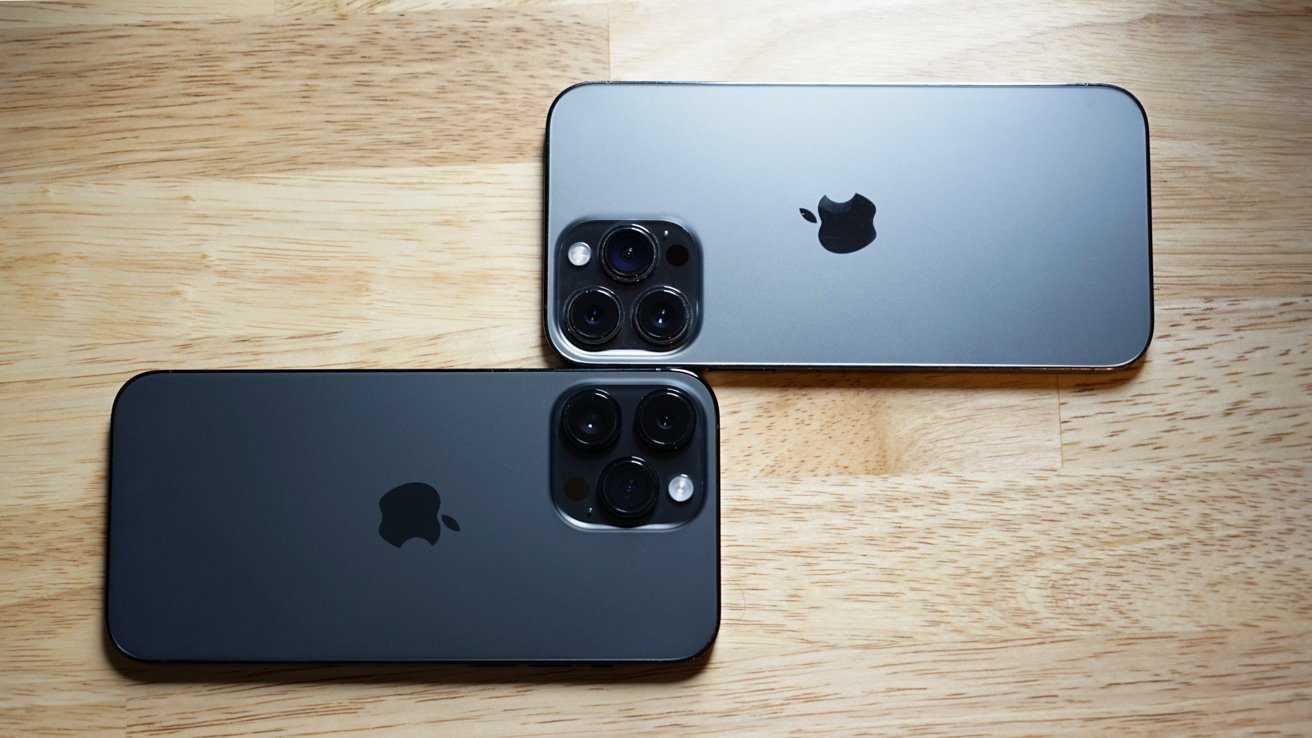Apple's component cost to produce the iPhone 14 Pro Max is a mere 3.7% more than what it paid to make each iPhone 13 Pro Max in 2022, analysts claim.

The iPhone 14 Pro Max and iPhone 13 Pro Max
The blended build of materials refers to the cost of production for a product, covering all components used to assemble the final product. In analysis of the 2023 iPhones, it seems that the cost to Apple to make the iPhone 14 Pro Max is only a little higher than for its year-ago counterpart.
The iPhone 14 Pro Max with 128GB of NAND flash costs Apple about $464, according to Counterpoint Research. This works out to be an increase of 3.7% from the estimated BOM for the iPhone 13 Pro Max.
The increase in cost is largely made up of the chip, display, and camera changes, which also now take up a larger share of the bill of materials itself.
The move to the A16 Bionic from the A15 Bionic costs Apple $11 more than in the previous model, which also raised the processing group's cost share to 20% in the bill of materials. The new always-on display also increased costs, with it now making up 20% of the total, up from 19%.
The addition of the 48-megapixel main camera with the quad-pixel image sensor, along with an upgraded sensor-shift stabilization system has raised the cost of the camera category by $6.30 for the iPhone 14 Pro Max. Again, the proportion of the bill of materials for cameras is also up by 1% year-over-year to 11%.
One of the few areas where cost dropped was the cellular group, which saw its cost share reduce from 14% to 13%. This is said to be due to a fall in component prices for 5G as the technology becomes more popular with manufacturers.
Counterpoint also estimates the cost of Apple-designed components has also gained in share for the iPhone 14 Pro Max, with 22% of the bill of materials derived from such elements.
The increase in cost for the iPhone 14 Pro Max over the iPhone 13 Pro Max works out to be a bit more than $17 overall. This is a little lower than the $21.50 increase in the estimated build cost for the iPhone 13 Pro over the iPhone 12 Pro.
The last big jump in iPhone material costs disclosed by Counterpoint was for the iPhone 12, which cost Apple 21% more to buy components for than the iPhone 11.
